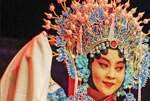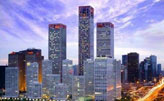China-US
Business magazines eye China growth
Updated: 2011-05-16 09:52
By Karen Yip (China Daily)
Social buzz
A lot of foreign titles face a similar challenge in China. It doesn't help that a lot of advertising has moved to the Internet.
More and more advertisers are expected to take advantage of China's booming online market. Online advertising revenues are forecast to reach $6.95 billion by 2012 and become the second-largest media for advertising in the country, according to a recent report by the Data Center of China Internet.
"There are alternative media or platforms that offer their services and content at cheaper rates. That is competition for us," said Graham Davis, managing director, China and Japan, at The Economist Group.
|
||||
Being realistic and not wanting to get caught up with the hype of doing business in China, he said the group is still at its drawing board, working on finding a suitable business model for The Economist magazine to be published in the Chinese language.
"We would love to do The Economist in Chinese. I believe China is going to be outward-looking and there will be strong demand for content such as that offered by us. It's an interesting market but we're not quite there yet.
"We're still thinking about what we can do. We know there's a reader base. The question is: How do we reach these readers? We could go print, online, digital, or form partnerships. But we don't know which way is the best," he said.
"At the moment we don't have clarity on the business model. We prefer to get things right. We're not in a hurry."
The Economist Group is one of very few media companies that reported strong profits, revenues and circulation growth from The Economist magazine and Economist.com during 2008 and 2009, the years when most news organizations hemorrhaged staff, closed bureaus, reduced coverage, went bust or dipped into the red.
The group's current contact with the Chinese market is from the Economist Intelligence Unit (EIU) based in Beijing. A research and advisory firm, EIU charges premium fees to subscribers, who are mostly business leaders and decision-makers, for high quality information on economic and political forecasts, analysis, and data covering 185 countries.
"The EIU content is loved by our Chinese business partners. My gut feeling is there is a market demand for what we write. We're convinced that people want to read us," Davis said.
The Economist magazine will stay faithful to its editorial values, he said.
"There is no easy solution. We just have to be conscious when operating in China."
Fierce competition
It doesn't change the fact that Elle China may have new owners soon. The French-based magazine for women, published in China for 22 years, is heading to second-tier cities this year.
"We're pushing for expansion and presence in other cities. Despite the cut-throat competition, we aim to remain in the No 1 spot," said Jean de Boisdeffre, CEO International, Magazines of Lagardre Active Group of France.
Two months ago, Hearst Corp agreed to pay $887 million to Lagardere SCA to assume control or part-control of 102 magazine editions in 15 countries, including the publishing rights to Elle magazine outside France.
The acquisition adds Elle to Hearst's existing portfolio that includes Harper's Bazaar, Marie Claire and Cosmopolitan, ramping up competition against industry giants such as Conde Nast, publisher of Vogue and Glamour, and Time Inc, publisher of InStyle.
De Boisdeffre will assist Hearst Corp during the transition period.
Until the acquisition process is completed, for now, Elle's close competitors such as Cosmopolitan, Harper's Bazaar and Vogue magazines have mounted fierce competition in the women's magazine business in China.
But Elle is still the leader, he said, "as it's highly appreciated by advertisers and readers" because of the value, branding, and satisfaction that the premium magazine gives.
Century Publishing Group of Shanghai is licensed to publish Elle China.
To keep abreast of competition, Elle China has evolved to offer two magazines for the price of one. Other beauty or female magazines have followed suit.
"Such evolution of Elle has helped in capturing and keeping more readers of the magazine. It was also aimed to meet the expectations of our readers," he said.
To keep the magazine's growth momentum in China, Elle is now available on the web and, in February, Elle Men China edition, a monthly magazine, was launched.
Specials

The song dynasty
There are MORE THAN 300 types of Chinese operas but two POPULAR varieties are major standouts

Sino-US Dialogue
China and the US hold the third round of the Strategic and Economic Dialogue from May 9-10 in Washington.

Building communities
American architect John Portman and his company have developed more than 30 projects across China.



